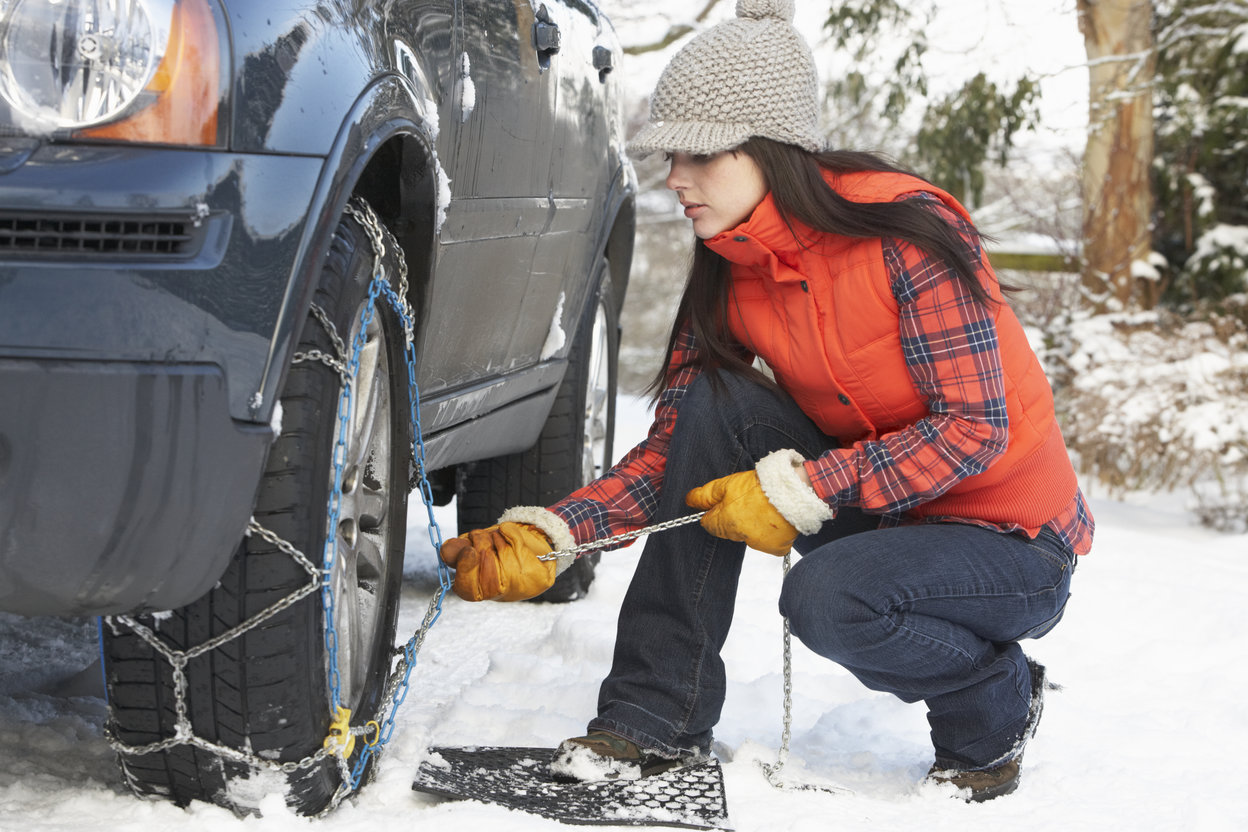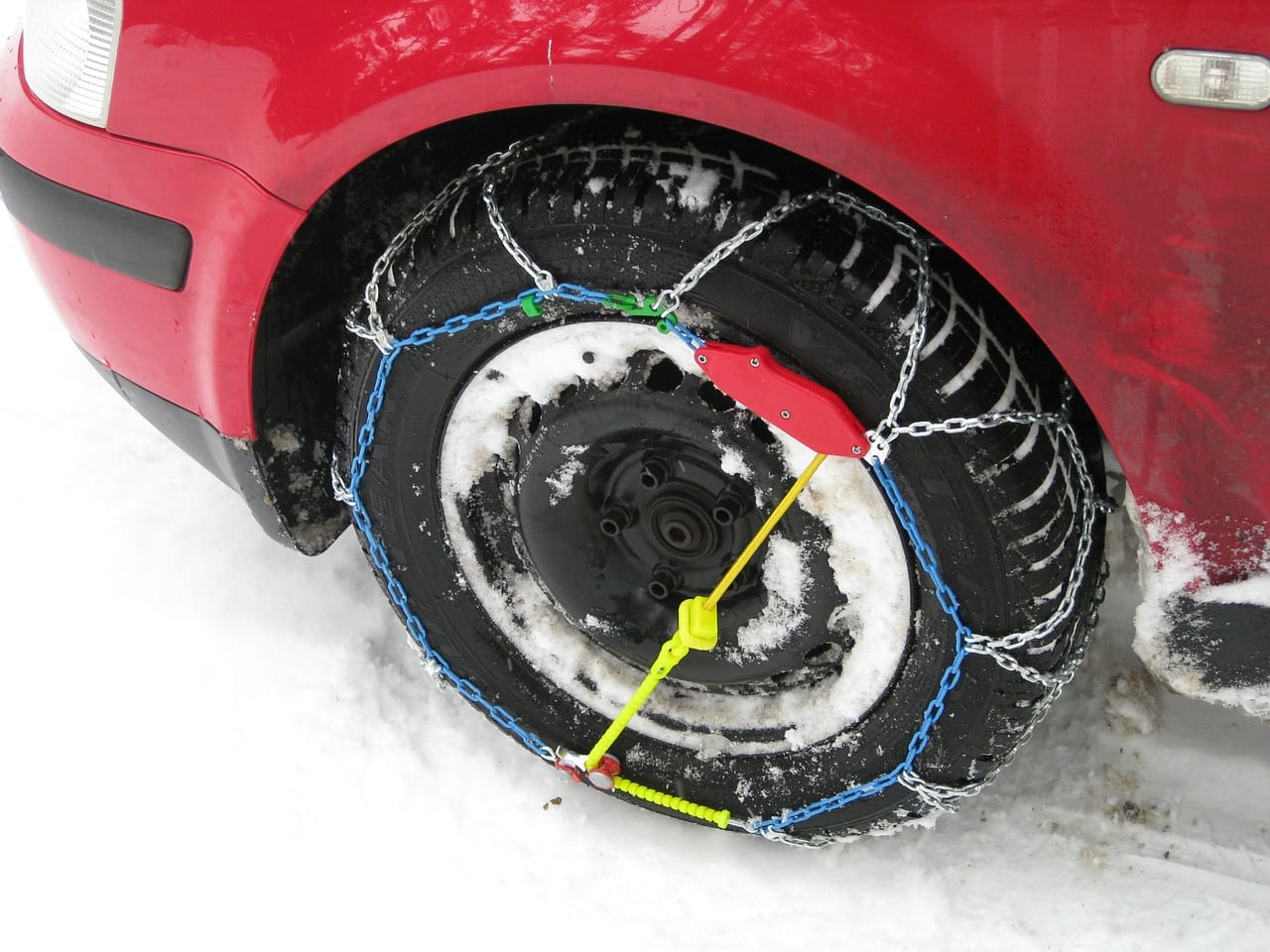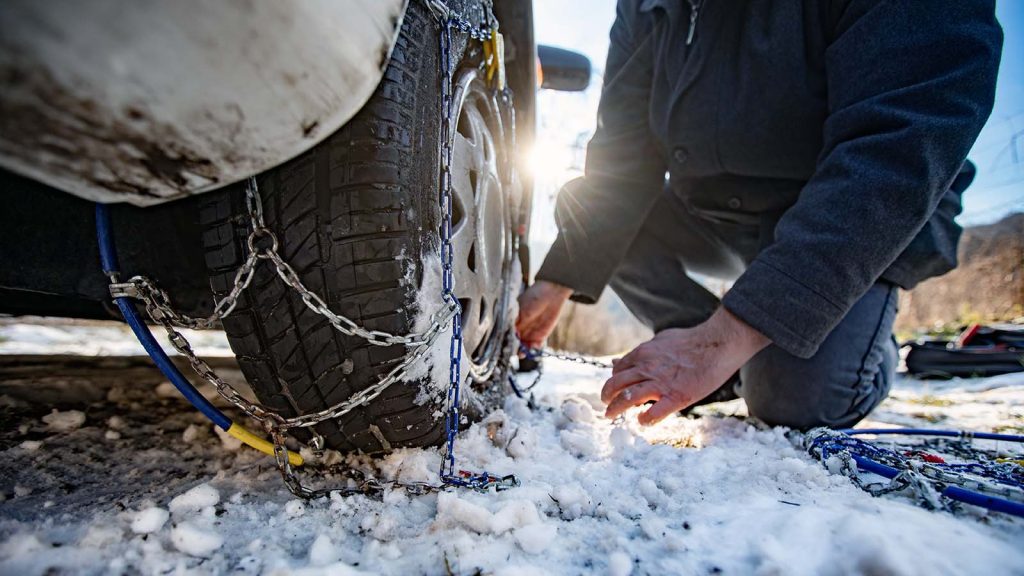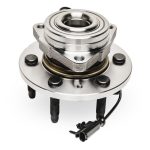
I. Introduction
A. The Challenges of Winter Driving: Navigating Snow and Ice
As the winter season approaches, many motorists face the daunting prospect of navigating snow and ice-covered roads. These challenging conditions can significantly reduce traction, increase stopping distances, and heighten the risk of accidents. Proper vehicle preparation is essential for ensuring safe winter driving, and tire chains play a crucial role in enhancing grip and control in slippery conditions.
B. The Role of Tire Chains: Enhancing Traction in Slippery Conditions
Tire chains are specialized devices that provide additional traction for vehicles on snow and ice. They consist of a series of interconnected metal links or cables that wrap around the tires, creating a network of gripping elements that dig into the snow or ice, enhancing the tire’s ability to maintain contact with the road surface.
The use of tire chains can significantly improve traction and control, allowing vehicles to start, stop, and maneuver more safely on slippery roads. This is particularly important for vehicles with rear-wheel drive, which are more prone to slipping and losing traction in winter conditions.
C. Understanding Tire Chain Compatibility: Selecting the Right Chains for Your Vehicle
Not all tire chains are compatible with all vehicles. It is crucial to select tire chains that are specifically designed for your vehicle’s tire size and model. Improperly sized or incompatible chains can cause damage to your vehicle or even pose safety hazards.
Consulting your vehicle’s owner’s manual or the tire chain manufacturer’s recommendations is essential for selecting the correct tire chains. These resources will provide specific information about the type, size, and compatibility of tire chains suitable for your vehicle.

II. Essential Tools and Materials: Preparing for Tire Chain Installation
A. Gathering the Necessary Tools: Ensuring a Smooth Installation Process
Before embarking on the tire chain installation process, it’s essential to gather the necessary tools and materials to ensure a smooth and efficient experience. These items include:
-
A pair of gloves: Protect your hands from the cold and sharp edges of the tire chains.
-
A flashlight or headlamp: Provide adequate lighting in low-visibility conditions, especially if you’re installing tire chains at night or in poorly lit areas.
-
A sturdy kneeling pad or mat: Offer comfort and protect your knees while working on the ground during tire chain installation.
B. Locating the Tire Chain Installation Points: Identifying the Designated Areas
Your vehicle may have designated tire chain installation points, which are typically located on the tire sidewalls or wheel hubs. These points are designed to provide secure and proper attachment for the tire chains.
Familiarize yourself with the location of these installation points before you need to install the tire chains. This will save time and frustration when you’re working in challenging winter conditions.
C. Checking Tire Chain Condition: Ensuring Proper Function and Safety
Before installing tire chains, it’s crucial to inspect them for any signs of damage or wear. Check for broken links, excessive wear, or rust that could compromise the chain‘s integrity and performance.
If you notice any damage or wear, replace the tire chains with a new set. Worn or damaged tire chains can break or become loose during use, posing safety hazards and potentially causing damage to your vehicle.

III. Step-by-Step Installation Guide: Securing Tire Chains Safely
A. Positioning the Vehicle: Finding a Safe and Level Work Area
Choose a safe and level work area away from traffic and potential hazards. Ensure the area is well-lit, especially if you’re installing tire chains at night or in low-visibility conditions.
Engage the parking brake and place wheel chocks behind the tires to prevent the vehicle from rolling while you’re working on the tire chains. This will ensure your safety and stability during the installation process.
B. Draping the Tire Chains: Positioning the Chains for Installation
Draping the tire chains over the tire is the first step in the installation process. Ensure the chains are not tangled or twisted and that they are properly aligned with the tire tread pattern.
For cross chains, align them perpendicular to the direction of tire rotation. For cable-style tire chains, ensure the cables are evenly distributed around the tire circumference.
C. Connecting the Chains: Securing the Chains to the Tire and Vehicle
Follow the manufacturer’s instructions carefully to connect the tire chains to the designated installation points on your vehicle. These points are typically located on the tire sidewalls or wheel hubs.
Use the provided hooks, clips, or tightening mechanisms to secure the chains firmly to the vehicle. Ensure all connections are tight and secure to prevent the chains from becoming loose during driving.
D. Double-Checking Connections: Ensuring a Secure Fit
Once you’ve connected the tire chains, take a moment to double-check all connections. Inspect each link, hook, or clip to ensure they are properly fastened and there’s no slack. Tighten any loose connections or adjust the chains as needed to achieve a snug fit. Remember, loose chains can cause damage to your vehicle and compromise their effectiveness.

IV. Testing and Adjustment: Verifying Proper Installation and Fit
A. Moving the Vehicle a Short Distance: Assessing Chain Performance
After installation, it’s crucial to test the functionality and fit of the tire chains. Carefully drive the vehicle a short distance at low speed on a clear and safe surface.
Listen for any unusual noises, such as clunking or scraping, which might indicate improper chain placement or tension. Be alert for any vibrations that could signal loose chains or interference with vehicle components.
B. Adjusting Chain Tension: Ensuring Optimal Grip and Safety
If you hear unusual noises or feel vibrations, it might be necessary to adjust the chain tension. Refer to the manufacturer’s instructions for specific methods on adjusting the tension. Typically, this involves tightening a dedicated tensioning mechanism or using a lever provided with the chains.
The goal is to achieve a snug fit without excessive slack. Loose chains can bounce and damage your vehicle, while excessively tight chains could put strain on the tire chains and potentially damage the tires themselves.
C. Re-inspecting Connections: Verifying Secure Fit After Adjustment
After any adjustments to the chain tension, it’s essential to re-inspect all connections. Ensure all hooks, clips, and tightening mechanisms remain secure and haven’t loosened during the adjustment process.
Double-checking connections after adjustments is crucial to ensure the chains remain securely fastened and provide optimal traction and control on the road.

V. Safe Driving with Tire Chains: Considerations and Precautions
A. Reducing Speed: Adjusting Driving Habits for Safe Chain Use
While tire chains significantly improve traction, it’s important to adjust your driving habits accordingly. Driving at reduced speeds is essential for safe winter driving with tire chains. This allows for better control of the vehicle and reduces the risk of the chains dislodging or causing damage.
Avoid sudden acceleration, braking, or sharp turns, which could put excessive strain on the chains and potentially cause them to break or come loose. Maintain a smooth and controlled driving style when using tire chains.
B. Monitoring Chain Condition: Checking for Wear and Damage
Regularly inspect your tire chains for signs of wear and damage throughout your winter journey. Check for broken links, excessive wear on the chain links or cables, or any signs of loosening connections.
If you notice any damage or wear, address it promptly. In some cases, minor repairs might be possible. However, if the damage is significant, replace the tire chains with a new set to ensure optimal performance and safety.
C. Removing Tire Chains When Not Needed: Avoiding Unnecessary Wear
Once you’ve navigated the wintery conditions and reached a clear, dry road, it’s important to remove the tire chains. Leaving them on when they’re not needed can cause unnecessary wear and tear on both the chains and your tires.
Follow the manufacturer’s instructions for safe and proper removal of the tire chains. Store them in a clean and dry location for future use, ensuring they’re readily available for your next winter adventure.
VI. Conclusion
A. The Significance of Tire Chains for Winter Safety
Equipping your vehicle with tire chains is a crucial step for ensuring safe winter driving. Tire chains significantly enhance traction and control on snow and ice-covered roads, allowing you to navigate these challenging conditions with greater confidence.
Proper selection, installation, and usage of tire chains are essential for maximizing their effectiveness and safety benefits. By following these guidelines, you can ensure your vehicle is prepared to handle winter weather and that you can reach your destination safely.
B. Embracing Preparedness for Winter Journeys
Winter can be a beautiful season, but it also presents unique challenges for drivers. By being prepared with the right equipment and knowledge, you can navigate these challenges with confidence. Tire chains are a valuable tool for winter driving, providing peace of mind and the ability to safely explore and enjoy winter landscapes.
So, the next time winter approaches, don’t let the prospect of snow and ice deter you from your journeys. By equipping your vehicle with tire chains and familiarizing yourself with proper installation techniques, you can ensure safe and enjoyable winter driving experiences.


